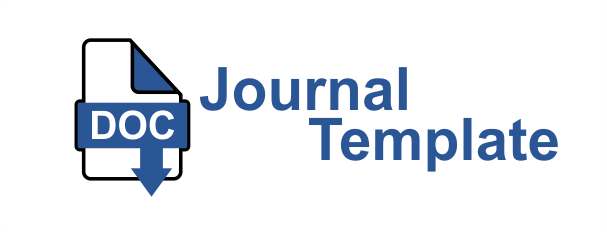Baby Massage Training in The Covid-19 Pandemi
Pelatihan Pijat Bayi Di Masa Pandemi Covid-19
Abstract
Disturbances or difficulties will usually interfere with the ideal growth and development of the baby. Disrupted growth and development disorders will occur if there are genetic or environmental factors that do not meet the basic needs of growth and development. One of the growth and development disorders in infants is weight gain and sleep patterns that are not sound. effort to optimize growth and development during the golden period in infants and is to provide good encouragement or stimulation to children. Parents can provide good encouragement or stimulation to children such as tactile stimulation in the form of baby massage. Community service aims to increase knowledge about the practice of infant massage. The subject of this activity is mothers who have babies and toddlers. This activity uses online/online/zoom media. carried out on Saturday, August 14 2022 via online/zoom media, the target target is mothers who have babies and toddlers as many as 15 mothers in Rt 13 Rw 13 Pisangan Timur Village, East Jakarta. The method consists of 3 stages: initial survey, implementation, evaluation. The results of the initial survey were mothers with poor knowledge of 33%, the implementation used the question-and-answer lecture method and demonstrations. The final evaluation is that the mother can practice massage on her baby and the mother has 100% good knowledge. It is hoped that this community service can provide insight to mothers about infant massage and be able to apply infant massage practices.
Downloads
References
Indonesia, 17(1), 25–29. https://doi.org/10.7454/jki.v17i1.371
Kustiani, A., & Misa, A. P. (2018). Jurnal Kesehatan Perintis (Perintis’s Health Journal). Health Journal, 5, 51–57.
Marlina, L. (2019). Pengaruh Pijat Bayi Terhadap Kenaikan Berat Badan Bayi Umur 0-3 Bulan Di Desa Mekarmukti Kecamatan Cisaga Kabupaten Ciamis. Jurnal Ilmiah Rekam Medis Dan Informatika Kesehatan, 3(November), 83–84. http://www.jurnal.ubktasikmalaya.ac.id/index.php/jmk_kb/article/view/89
Nurma Ika Zuliyanti, N. U. L. (2019). Faktor-Faktor Yang Mempengaruhi Pengetahuan Ibu Tentang Pijat Bayi Di Bpm Sri Mulyani, Amd.Keb Desa Kaliwatubumi Kecamatan Butuh Kabupaten Purworejo. Jurnal Komunikasi Kesehatan, 10(1), 29–37. d:%5CDownloads%5CDocuments%5C37-Article Text-74-1-10-20191217_2.pdf
Pratiwi Utari. (2016). Hubungan Status Gizi Dengan Tumbuh Kembang Anak Usia 6- 12 Bulan Di Posyandu Wilayah Kerja Puskesmas Sempaja Samrinda Tahun 2016. Skripsi.
Rita Kirana, Aprianti, N. W. H. (2022). Pengaruh Media Promosi Kesehatan Terhadap Perilaku Ibu Dalam Pencegahan Stunting Di Masa Pandemi Covid-19 (Pada Anak Sekolah Tk Kuncup Harapan Banjarbaru). Jurnal Inovasi Penelitian, 2(9), 2899–2906.
Saddiyah Rangkuti. (2021). Pengaruh Pendidikan Kesehatan Pijat Bayi terhadap Kualitas Tidur Bayi Usia 0-6 Bulan di BPM Dewi Suyanti Tahun 2020. Jurnal Kesehatan Masyarakat (JURKESMAS), 1(1), 34–42. https://doi.org/10.53842/jkm.v1i1.10
Susanty, A., & Anandita, A. C. (2018). Hubungan Kesulitan Makan Terhadap Perkembangan Anak Usia Prasekolah. Repository.Um-Surabaya.Ac.Id, 0123128002, 1–50. http://repository.um-surabaya.ac.id/6110/%0Ahttp://repository.um-surabaya.ac.id/6110/1/Ade_susanty_Done.pdf
Umriaty, & Setia, R. (2017). Hubungan Pengetahuan dan Sikap Tentang Kanker Serviks. Siklus, 6(2), 245–251.
Utami, M. W. (2021). Pengaruh pijat bayi terhadap kualitas tidur bayi usia 3-6 bulan karya tulis ilmiah. Global Health Science, 3(1), 25–32.
Yuniarni, D. (2016). Peran Paud Dalam Mengoptimalkan Tumbuh Kembang Anak Usia Dini Demi Membangun Masa Depan Bangsa. Jurnal Visi Ilmu Pendidikan, 8(1), 1–13. https://doi.org/10.26418/jvip.v8i1.27370
Copyright (c) 2023 Sri Dinengsih, Eka Oktavia

This work is licensed under a Creative Commons Attribution 4.0 International License.
Authors who publish with this journal agree to the following terms:
- Authors retain copyright and grant the journal right of first publication with the work simultaneously licensed under a Creative Commons Attribution License (CC-BY) that allows others to share the work with an acknowledgment of the work's authorship and initial publication in this journal.
- Authors are able to enter into separate, additional contractual arrangements for the non-exclusive distribution of the journal's published version of the work (e.g., post it to an institutional repository or publish it in a book), with an acknowledgment of its initial publication in this journal.
- Authors are permitted and encouraged to post their work online (e.g., in institutional repositories or on their website) prior to and during the submission process, as it can lead to productive exchanges, as well as earlier and greater citation of published work (See The Effect of Open Access).











